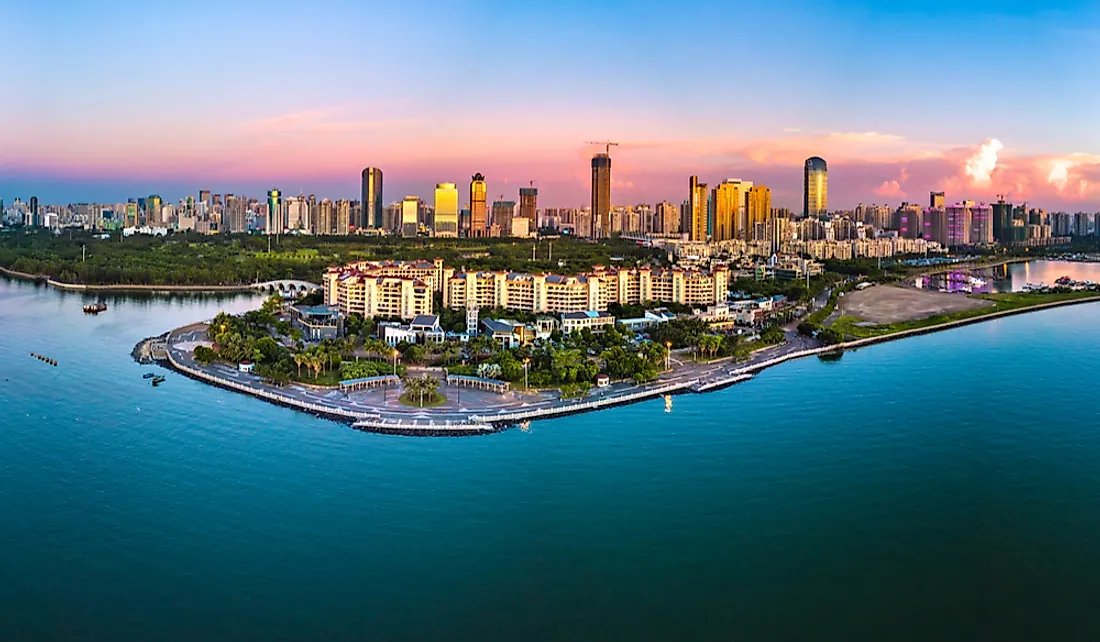What Is The Capital Of The Hainan Province Of China?

Hainan is China’s southernmost province, and with an area of 33,920 km2, it is also the country’s smallest province. The province is not part of mainland China, but consists of several islands in the South China Sea, and is separated from the Leizhou Peninsula of mainland China by the Qiongzhou Strait. Hainan was previously part of Guangdong Province, but was established as a separate province in 1988. Today, Hainan contains ten major cities and ten counties, and is home to a population of 9,257,600. Hǎikǒu is the capital and largest city of Hainan.
Capital of Hainan
Hǎikǒu covers an area of 2,237 km2 on the northern coast of Hainan, at the mouth of the Nandu River. Additionally, the city is located across from the Leizhou Peninsula of mainland China and is separated by the Qiongzhou Strait. Most of Hǎikǒu is flat, and the Meishe River flows through the city’s eastern side, before joining the Haidian River, which is a tributary of the Nandu River, and ultimately drains into the Qiongzhou Strait. Additionally, the Haidian River separates the northern part of Hǎikǒu from the rest of the city, although the two parts of the city are connected by three bridges: Haiku Century Bridge; Renmin Bridge; and Heping Bridge. Haikou's location in the torrid zone makes the city extremely vulnerable to storms and typhoons.
Demographics of Hǎikǒu
Hǎikǒu is Hainan’s most populous city, with an estimated population of 2,046,189 and a population density of approximately 910 persons per square kilometer. The average annual population growth in Hǎikǒu between 2000 and 2010 was 3%. The Han people are the largest population group in Hǎikǒu.
History of Hǎikǒu
The area that is now Hǎikǒu served as a port for the city of Qiongshan, an ancient administrative capital of Hainan. During the rule of the Ming Dynasty in the 13th century, a military outpost was established in the port area. As the importance of foreign trade grew, Hǎikǒu became more significant than Qiongshan, which was located inland and therefore had less access to the sea. By 1926, Hǎikǒu had grown larger than Qiongshan, and was eventually declared a separate administrative city. Hainan, which included Hǎikǒu, was captured by Japan during the Sino-Japanese War and occupied until 1945. The city remained under the control of the Nationalists until April 1950, after which it fell under Communist rule.
Economy of Hǎikǒu
Hǎikǒu is an important economic hub of Hainan Province. In 2011, the city had a gross domestic product (GDP) that represented approximately 30% of Hainan's total GDP. Additionally, the city had a GDP per capita of $3,573 USD in 2008. The city’s coastal location led to its development as a major port city that exports livestock and agricultural goods. Industries within Hǎikǒu include textiles, rice processing, and canning, while its tourism is experiencing significant growth.











